Unlike the plants we sow for harvesting, cover crops are grown for the soil, not our tables.
Widely used by organic and conventional farmers, they’re planted in rotation with cash crops to sweeten the soil, or for winter protection.
But they’re equally beneficial and easy to use in the home garden as well.
Along with improving your soil’s nutritional profile, they prevent soil loss due to erosion, improve the structure and tilth of soil, prevent compaction, assist with water infiltration and retention, break up pest cycles, and suppress weeds.
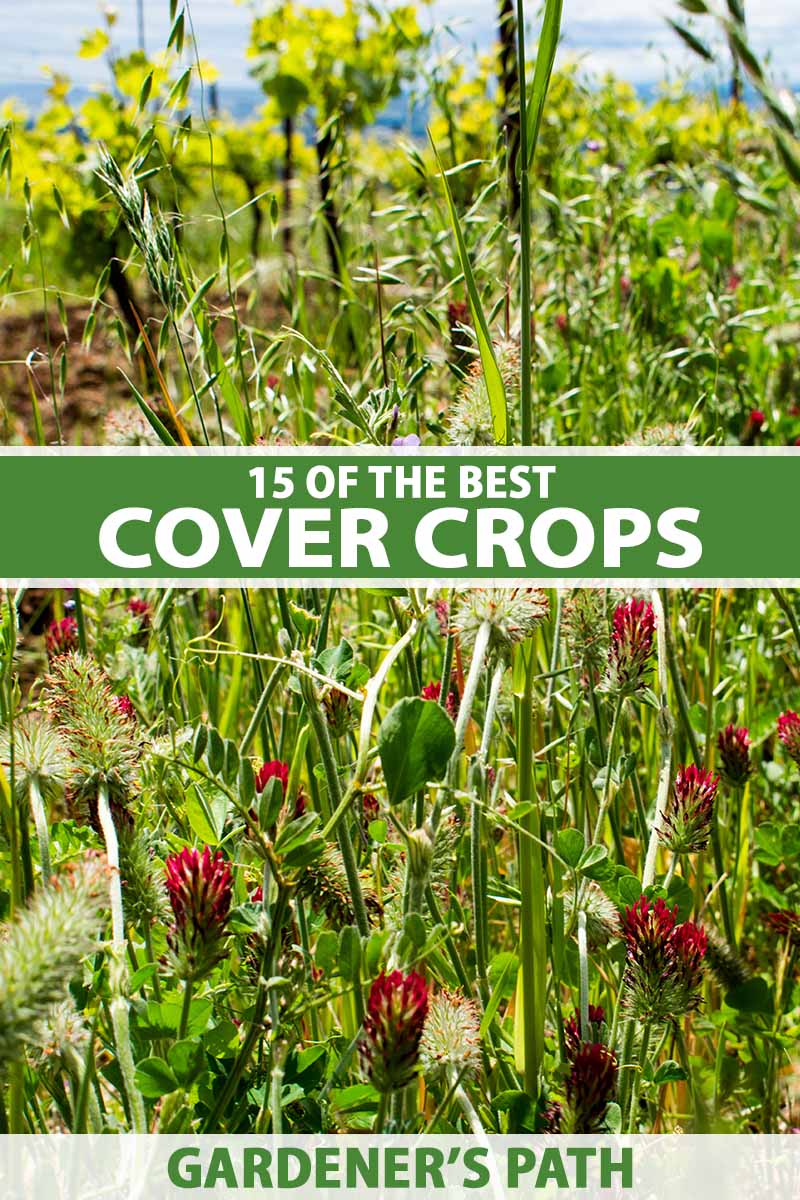
We link to vendors to help you find relevant products. If you buy from one of our links, we may earn a commission.
They also reduce or eliminate the need for synthetic fertilizers, which has a significant, beneficial effect on our backyard flora and fauna, and the environment at large.
You can read more about their uses and many benefits in our guide to the art of cover cropping.
Smartly efficient, effective, and all natural, here are 15 of the best cover crops for the home garden.
15 of the Best Cover Crops for Healthy Soil
Plant selections for cover crops are divided into three categories of brassicas, grains and grasses, and legumes.
Let’s look at what each category offers.
Brassicas
Brassica is the collective name for plants of the Brassicaceae or Cruciferae family, many of which are commonly grown vegetables.
Many of these species make great food crops, and popular brassicas you might already be growing include arugula, kale, mustard, and radishes.
Several contain chemical compounds that give them peppery, pungent flavors. And the same compounds that give them their signature hot flavors are released into the soil when plant cells are ruptured by mowing, tilling, or winter-kill.
Plant decomposition then converts the glucosinolates into sulfur with thiocyanate compounds, giving them amazing biofumigation properties that can suppress several soilborne diseases such as bacterial wilt, caused by Erwinia tracheiphila, and parasitic nematodes such as the northern root-knot nematode, Meloidogyne hapla.
Often used in winter, brassicas are cool-season plants that improve soil aeration and structure, help with weed suppression, and provide a healthy mulch and erosion control in winter.
Find out more about winter cover crops here.
These are the top picks for growing in the home garden:
1. Arugula
Also called salad rocket, arugula (Eruca sativa) is a favorite salad green known for its tangy, spicy leaves.
Planted in late summer or fall, it protects beds in winter, and makes a good choice for the backyard or small-space gardener.
Arugula has good biofumigation properties, improves soil structure and aggregates, suppresses weeds, and provides a moderate mulch for winter beds.
Arugula seeds are available at Burpee.
Read more about growing arugula here.
2. Canola
Grown as a cash crop for its valuable oil, canola, aka rapeseed, (Brassica napus) is available as a winter or spring crop, with winter-hardy varieties providing excellent erosion control.
Plants grow rapidly, forming an abundant, nitrogen-rich biomass that has some allelopathic and biofumigant properties. Canola also helps to condition and improve soil structure, and provides good weed suppression.
Canola seeds are available at Home Depot.
3. Forage Radish
Forage radish (Raphanus sativus), also known as daikon, makes a good groundcover, and with its long taproot it’s excellent at breaking up hard soils like clay.
These plants also provide great food straight from your garden, nicely combining two functions into one!
For best results, sow seeds in late summer into early fall as a winter cover crop. Plants are typically winter-killed, and plant residue is tilled under in spring.
Radishes have strong biofumigation properties, help to aerate soils, increase water infiltration and retention, improve soil structure, give excellent erosion control in winter, and deter weeds.
Daikon radish seeds are available at Home Depot.
Find all the cultivation details in our guide to growing daikon radish.
4. Mustard
Mustard is a cool-season annual grown for its zesty edible greens. As a cover crop, mustards have deep, aerating taproots and perform best when planted in the fall.
‘Nemagon’ mustard, a white variety often recommended for cover cropping, is available at True Leaf Market.
Different species may be used, including white (B. hirta), brown (B. juncea), and black mustard (B. nigra). Plants are winter-killed and tilled under in spring.
Containing high levels of glucosinolates, mustard is among the best cover crops for producing biofumigant effects. Mustards also have allelopathic properties for effective weed control, and provide a moderate winter mulch with good erosion control.
Read up on how to grow and care for mustard greens here.
Grasses and Grains
Our ancestors figured out that grains are delicious and nutritious as food crops, and also discovered that they can be grown to serve the soil, and improve other important crops as well.
For cover purposes, small-seed spring and winter cereal grains and grasses are planted in the fall, and they provide several important functions.
They improve the nutrient cycling of nitrogen, potassium, and phosphorus, and add plenty of organic material that improves tilth and soil structure.
Their dense root systems also outcompete weeds, and provide excellent erosion control.
Grains are often paired with legumes to double up on the benefits while beds are fallow. Here are the top picks in this category:
5. Annual Ryegrass
Annual ryegrass (Lolium multiflorum) is a thick-growing bunch grass with an extensive root system, and it’s one of the easiest plants to cultivate with “throw and grow” seeds.
Plants enjoy warm weather but dislike the excessively hot temperatures of midsummer – making them ideal for sowing in spring and early summer.
Ryegrass prevents compaction, loosens soil, provides a natural winter mulch, controls nitrogen, suppresses weeds, and helps to reduce erosion.
Bags of annual ryegrass seed are available at Home Depot.
6. Barley
Barley (Hordeum vulgare) is a flavorful, cool-season grain with upright growth and deep, fibrous roots that provide excellent erosion control. Fast-growing, it produces an abundant biomass more quickly than most other grains.
Plants hold nitrogen well, releasing it back into the soil when tilled, and plant residues condition the soil and improve structure. Winter-killed barley is also good for weed control and makes an excellent green manure crop.
Organic barley seeds are available in bulk at True Leaf Market.
7. Buckwheat
Buckwheat (Fagopyrum esculentum) provides wheat-like seeds that can be cooked and used as a grain. It can be planted in late spring for fast rotation, or in late summer to early fall for winter protection.
This stout rhubarb relative is fast-growing and quickly fixes nutrients like calcium and phosphorus. It also suppresses weeds while it’s growing.
A good nutrient fixer, winter-killed plants form a light mulch and provide good erosion control, while the tilled residue improves soil structure and tilth.
Buckwheat seeds are available at Home Depot.
8. Oats
While they achieve comparatively less than other crops in terms of benefits, oats (Avena sativa) nevertheless have a very popular function and place in cover cropping.
A lover of cool temperatures, oats are planted in either spring or fall, for different reasons.
In the spring, oats are planted as green manure, then tilled back into beds to provide nutrients to the crops that follow. In the fall, the winter-killed foliage makes a thick winter mulch that controls erosion, then adds nutrients and improves soil structure when it’s tilled in spring.
Fast-growing, oats are often planted with peas and rye to help outcompete encroaching weeds.
Bags of organic whole oat seed are available at True Leaf Market.
9. Rye
A delicious grain found in pumpernickel and rye breads, winter rye (Secale cereale) is also an excellent shielding grass.
The intricate root system of these winter-hardy plants prevents nitrogen from leeching deep into the soil, and it makes a superb companion for nitrogen-fixing legumes.
Rye also blocks out weeds, and provides good erosion control against winter rain and wind. The tilled plants condition soil, and improve structure and tilth.
Organic winter rye seeds are available at Burpee.
10. Sorghum
Sorghum is a genus of grain grasses, including broom (S. bicolor) and sudangrass (S. bicolor var. drummondii).
Tall plants with strappy leaves like you would see on cornstalks, they make a top-notch green manure, and like the brassicas, have good biofumigation properties.
Their tall growth provides excellent climbing support for other plants like peas and vetch, and the shadows they cast block out light at ground level, preventing weeds from germinating.
The winter-killed plants create a thick mulch after dying back, and offer good erosion control.
Tilled plants help to boost soil nutrients, and improve structure and texture.
Bicolor sorghum seeds are available at True Leaf Market.
Legumes
Legumes belong to the large Fabaceae family that’s made up of a wide array of herbs, trees, and vegetables including the legumes used for cover crops such as alfalfa, beans, clover, lentils, peas, and vetch.
Legumes are premier nitrogen fixers, able to scavenge it from the atmosphere and soil for plant growth, then depositing it back into the soil as plants decompose.
Most form a symbiotic relationship with certain bacteria like Rhizobium and Bradyrhizobium species that actually synthesize nitrogen straightaway, right in the plant’s roots.
If nitrogen fixing is a goal, the best way to ensure this result is to invest in an inoculant containing strains of rhizobia bacteria, or you can purchase pre-inoculated seed.
When seeds are soaked in the bacterial inoculant, it kick-starts the fixing process, and helps plants to synthesize nitrogen into usable chemicals that fuel plants.
Guard’n Seed Inoculant for raw legume seeds is available at Arbico Organics.
Nitrogen fixing makes legumes a good choice for improving nutrition in poor soils. They fit well into rotations after a light-feeding plant, and before heavy-feeding ones.
Legumes are both winter hardy and winter-killed. They create ample foliage that provides a green manure or mulch, resist erosion, condition soil, and suppress weed growth.
Our top legume picks for cover cropping are up next.
11. Alfalfa
A prominent cover and rotation crop, alfalfa (Medicago sativa) has surface roots as well as a deep, long taproot that greatly improves water infiltration and permeability, and reduces soil compaction.
Alfalfa is a premier nitrogen fixer, and it also balances soil nutrients as it cycles other important minerals such as magnesium, phosphorus, and potassium.
An herbaceous perennial, it produces a healthy biomass that dies back in the cold winter, providing mulch for the dormant roots and good erosion control.
Growth resumes in spring, and tilled plants are used as a green manure to add nutrients and improve soil structure.
Organic alfalfa seeds are available at True Leaf Market.
Read more about growing alfalfa here.
12. Crimson Clover
A robust cool-season grower, crimson clover (Trifolium incarnatum) is another herbaceous perennial with winter-killed foliage and new growth in spring.
Plants produce an abundant biomass that mulches roots over the winter, and provides excellent erosion control and weed suppression.
Clover fixes large amounts of nitrogen, and its long taproots are effective at breaking up hardpan and thick clay soils. Flowering clover also attracts important pollinators like bees and butterflies.
Crimson clover seed is available at Botanical Interests.
13. Fava Beans
Fava beans (Vicia faba) are hardy annuals that grow in cool and warm seasons. They develop a lavish biomass that can easily be tilled or cut and composted.
Popularly used as a nitrogen fixer, the stout, upright plants work well with vining species such as field peas and hairy vetch for excellent weed suppression and erosion control.
Fava bean seed can be found at Botanical Interests.
Read more about growing fava beans here.
14. Field Peas
Fast-growing field peas (Pisum sativum) produce a considerable biomass that makes them suitable for spring or fall use.
When sown with rye or oats for support and structure, paired plantings provide good weed control and a thick winter-killed defense for effective erosion control.
Field peas fix moderate amounts of nitrogen, and tilled plants contribute residues that improve soil friability and add nutrients.
Find Austrian field peas at True Leaf Market.
15. Vetch
Did I save the best for last? Hairy vetch (Vicia villosa) is at the top of the list of nitrogen fixers, right next to alfalfa. It makes a popular selection for crop rotation in both conventional and organic farming, and in home gardens too.
Winter hardy, vetches are slow-growing plants. But once established, they form a lush canopy of foliage that improves water infiltration and retention, crowds out weeds, and provides excellent erosion control.
The tilled green manure residue helps condition the soil into a finer, healthier texture with improved aggregates.
Avoid planting other legumes right after vetch, as this can increase the chance of root rot, nematode infestation, and white mold in those plants, according to Thomas Bjorkman, Professor at the School of Integrative Plant Science, Cornell University.
Hairy vetch seeds are available at Botanical Interests.
Soil Improvement in Every Season
Providing multiple benefits, the brassicas, grains and grasses, and legumes we use as cover crops improve the soil in every season.
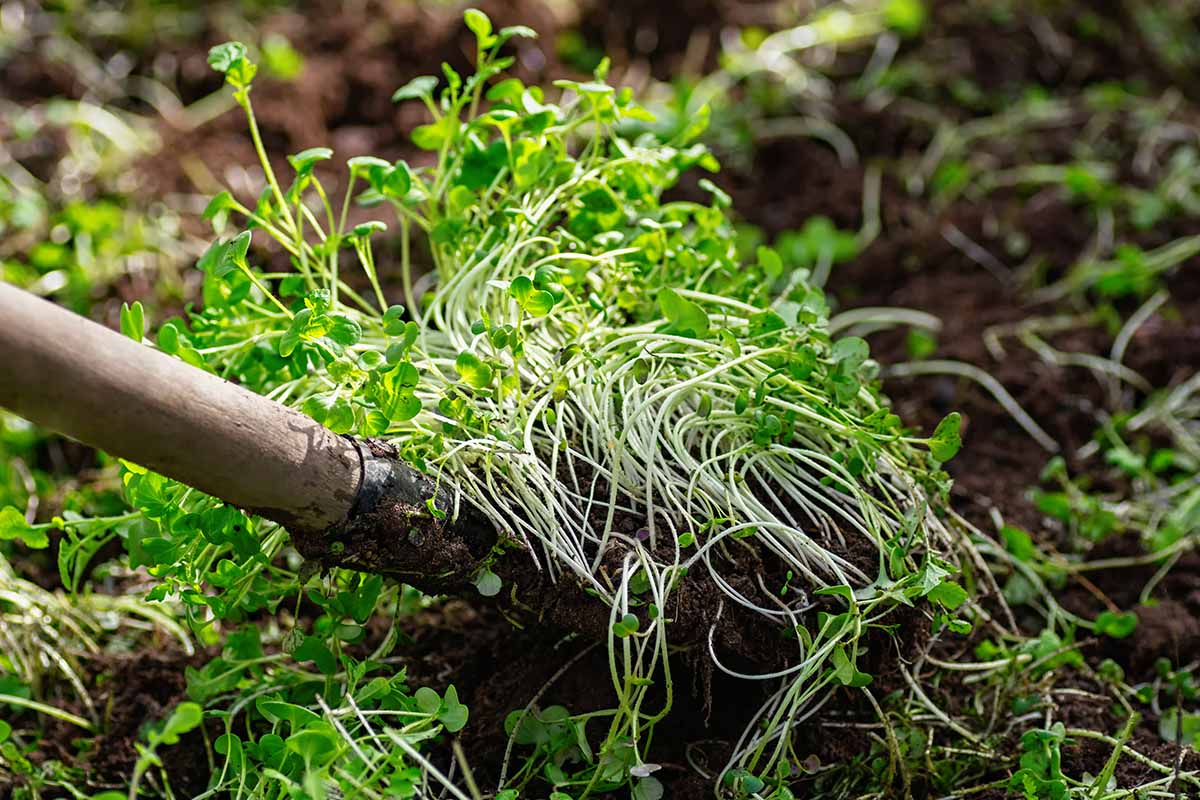
Use them for green manure before growing heavy feeders, grow them as winter erosion control to protect your topsoil, and sow them as a general tonic to improve moisture levels and soil structure, and to suppress pests and weeds.
Most are fast-growing and all are easy to cultivate – and you’ll love how quickly your garden responds to their use!
Do you have any questions about the cover crops mentioned here? Drop us a line in the comments below.
And for more soil improvement know-how, check out these articles next:
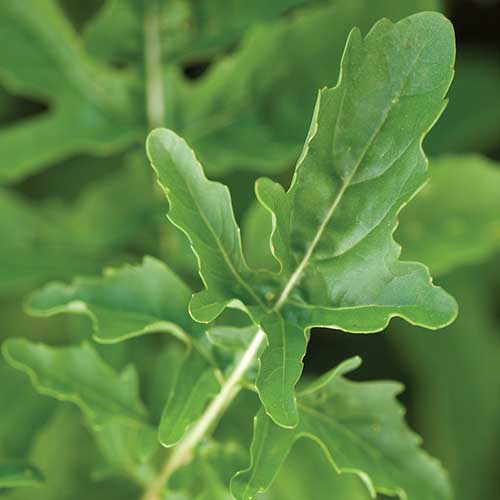
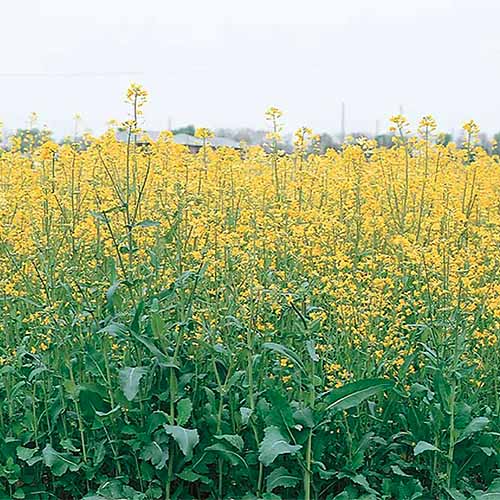
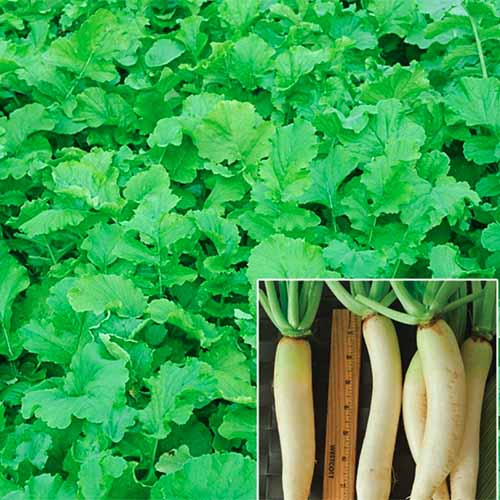
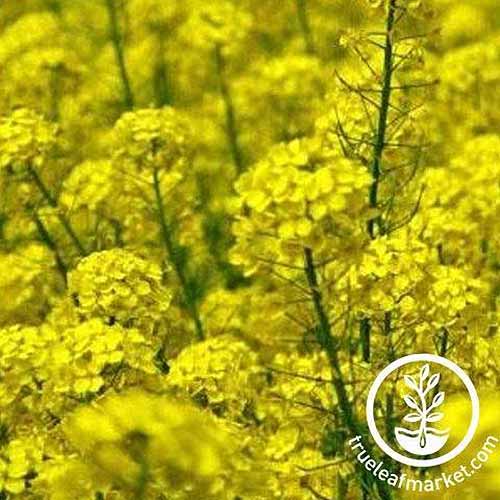
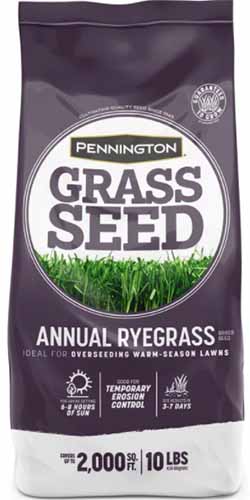
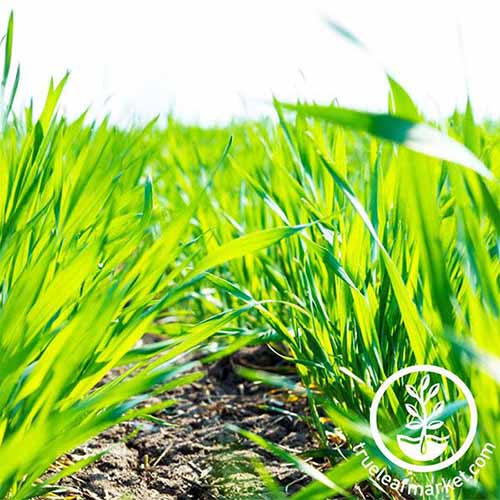


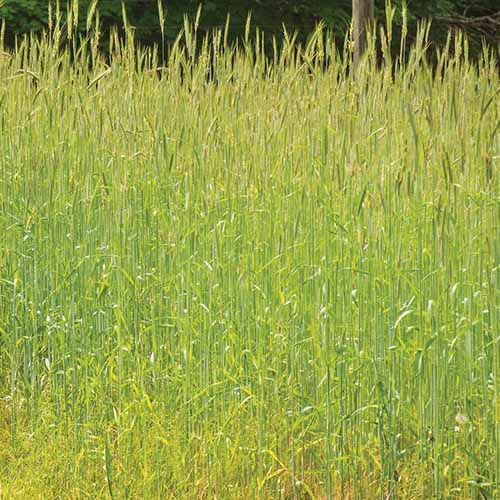
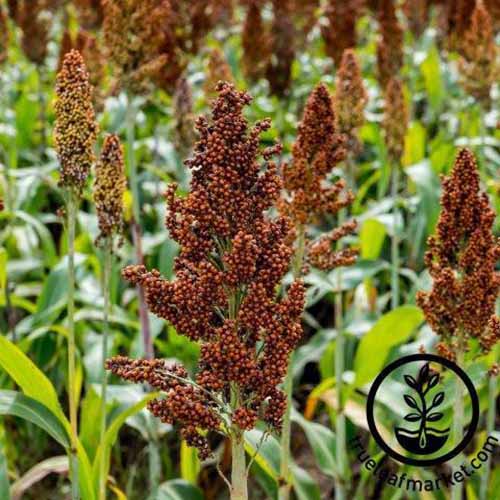
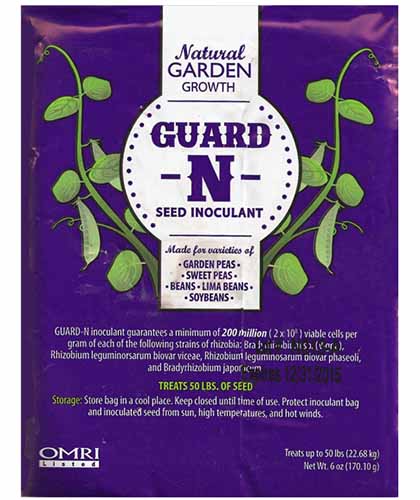
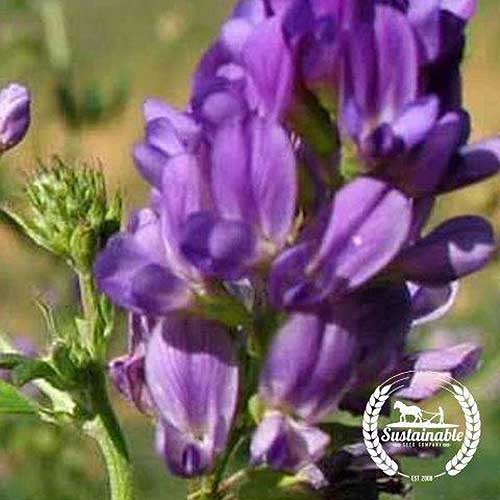
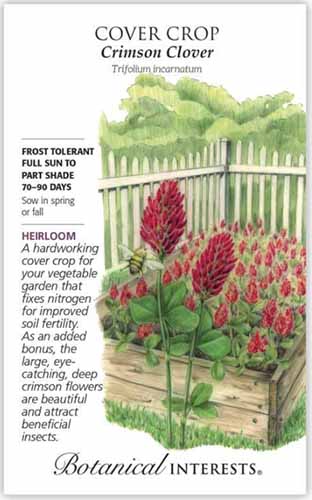
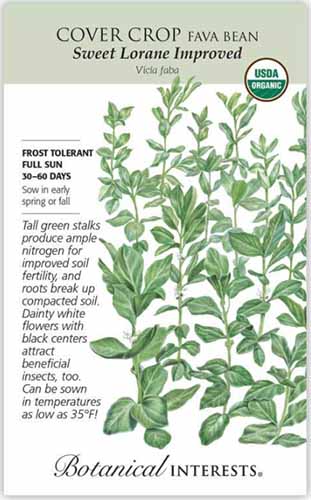
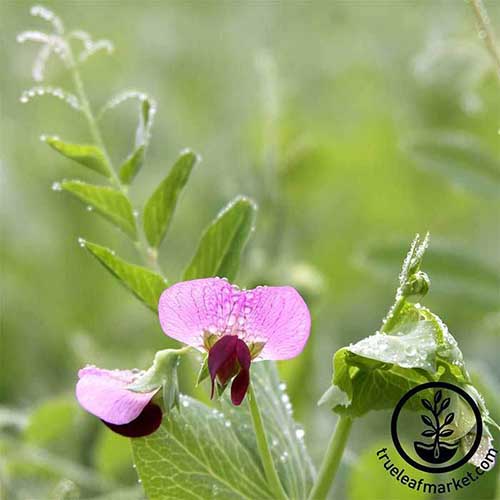
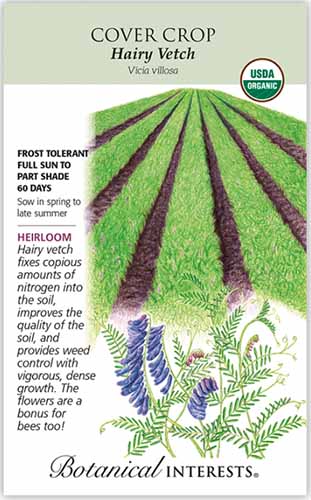
Great article. Thanks for the information. I would like to add that farm owners can also benefit further from cover crops, namely for grazing cattle. Furthermore, grazing cover crops enable farmers to create a natural outdoor environment for breeding, check out this article https://eos.com/blog/cover-crops/
There they also described a modern tool that helps with soil questions and analysis using vegetation indices. Maybe your readers or you will be interested.
Hi, question about using mustard as a cover crop in a patch of ground that has been growing brassicas and struck with bacterial rot. Will the mustard being a brassica make it worse, or will the action of the mustard clean the soil?
Hi Christine, if your previous crop was hit by a pathogen like black rot (Xanthamonas campestris), your best bet is to avoid planting any and all brassicas for three years.
I don’t believe growing a brassica like mustard would make it worse, but it will attack and weaken your plants, reducing the effectivenss of their beneficial properties.
You could use a fumicde on your soil to kill off any residue, but personally I suggest using a non-brassica for crop rotation, like red clover or rye for the next few years.
Thanks for asking!!